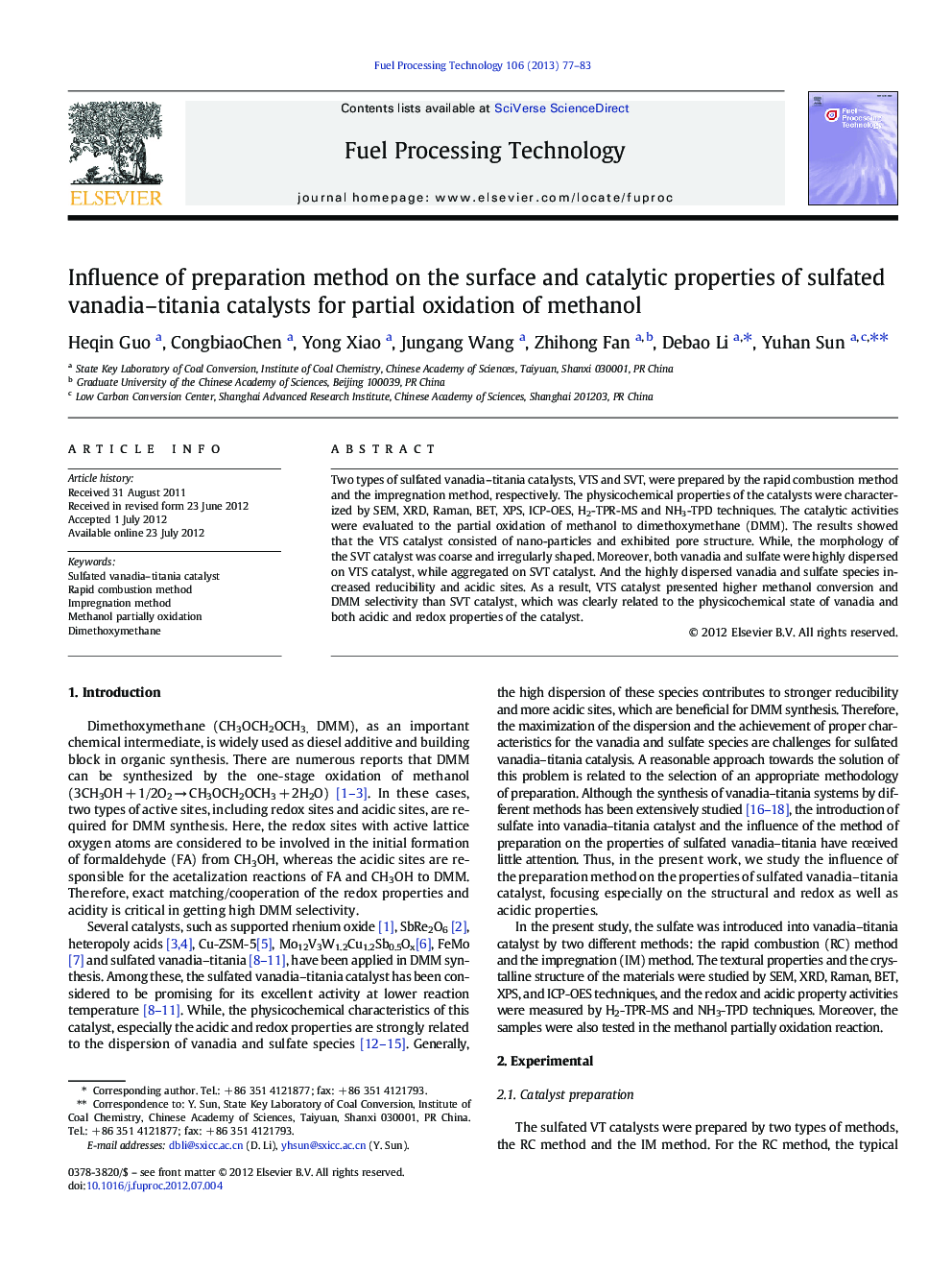| Article ID | Journal | Published Year | Pages | File Type |
|---|---|---|---|---|
| 210037 | Fuel Processing Technology | 2013 | 7 Pages |
Two types of sulfated vanadia–titania catalysts, VTS and SVT, were prepared by the rapid combustion method and the impregnation method, respectively. The physicochemical properties of the catalysts were characterized by SEM, XRD, Raman, BET, XPS, ICP-OES, H2-TPR-MS and NH3-TPD techniques. The catalytic activities were evaluated to the partial oxidation of methanol to dimethoxymethane (DMM). The results showed that the VTS catalyst consisted of nano-particles and exhibited pore structure. While, the morphology of the SVT catalyst was coarse and irregularly shaped. Moreover, both vanadia and sulfate were highly dispersed on VTS catalyst, while aggregated on SVT catalyst. And the highly dispersed vanadia and sulfate species increased reducibility and acidic sites. As a result, VTS catalyst presented higher methanol conversion and DMM selectivity than SVT catalyst, which was clearly related to the physicochemical state of vanadia and both acidic and redox properties of the catalyst.
► Preparation method influenced the physical-chemical properties of the catalysts. ► The catalytic performance was related to the redox and acidity of the catalysts. ► The VTS has stronger reducibility, more acidic sites and higher DMM selectivity.
